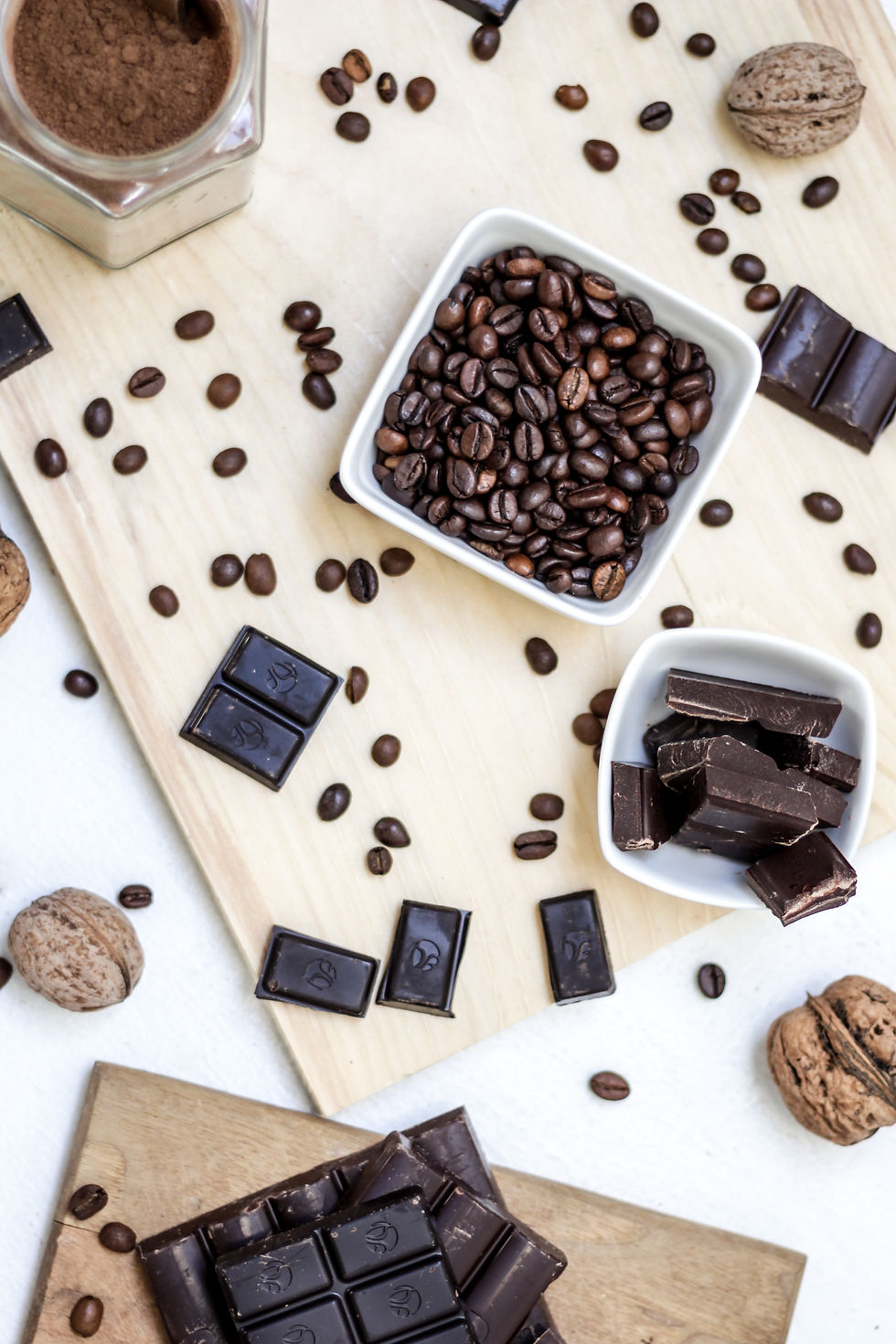Why your pet can't share in your favorite vices

Is there anything better than sharing a warm cup of coffee with your best friend on a lazy Sunday morning? Or how about heading out on a chocolate and wine tasting excursion together? Do I have your attention?…
Well, what if you consider your pet to be your best friend? It’s important to know that sharing in these experiences together may have undesirable consequences. Let’s explore why Fido can’t be your Starbucks sidekick…
Coffee
People enjoy coffee for many reasons: it’s delicious, it’s comforting, it brings friends and family together. It also contains that all-powerful chemical we know and love: caffeine. Unfortunately, caffeine is a common culprit in canine and feline toxin exposures. And while coffee is one of our favorite drinks, caffeine can also be found in tempting treats like tea, hot cocoa, soda, energy drinks and chocolate (more on this later…).
Caffeine acts as a stimulant on the cardiovascular and central nervous systems, and these effects are amplified in our four-legged counterparts.
Symptoms of ingestion include:
· Restlessness or hyperactivity, including panting or pacing
· Vomiting
· Diarrhea
· Tremors
· Seizures
· …or even death
Chocolate
Chocolate-lovers beware! Many of the same toxic components of coffee are also found in chocolate. Both contain types of methylxanthines that affect the heart, blood vessels and other smooth muscles. As a result, symptoms of ingestion can be similar. Signs vary depending on the type and amount of chocolate eaten, as well as the size and sensitivity of your pet.
The more methylxanthines (theobromine and caffeine) the chocolate contains, the more potential that treat has for poisoning your pet. In general, cocoa powder, unsweetened baker’s chocolate, and semisweet chocolate are more toxic than dark and milk chocolates.
Use this great Chocolate Toxicity Calculator provided by Merck Veterinary Manual to determine your pet’s risk.
Wine
Wine is so popular that some form of it is made in almost every country in the world! But despite this popularity among our fellow humans, our furry friends cannot imbibe.
We all know that any alcohol can be a potent suppressor of the central nervous system, but it’s important to understand that this can be especially dangerous for cats and dogs. Alcohol is absorbed quickly through the intestinal tract and can lead to weakness, a slowed heart rate and drop in blood pressure before we realize that our pet is in trouble. More severe cases can even result in low body temperature (hypothermia), low blood sugar (hypoglycemia), seizures and death.
But wait…there’s more… because wine is made from grapes, there is an added health risk for our canine BFF’s. The toxic component in grapes is still not understood; however, we do know that dogs who ingest grapes, raisins or currants are at risk for kidney failure and there is no antidote.
What to do if you suspect your pet ingested one of these off-limits treats:
1. Don’t panic.
2. Call your veterinarian or contact the ASPCA Pet Poison Hotline right away.
3. Recommendations and treatment options depend on what and how much the pet ate and how long ago it occurred. Be sure to relay this information to the vet.
4. Be prepared to take Fluffy or Boots to the emergency veterinarian if recommended. Treatments can include induction of vomiting, administering medications to prevent further absorption of the toxin, or even hospitalization for supportive care.
Sharing your life with a four-legged best friend can be one of life’s great pleasures, but that doesn’t mean that we have to share everything with them. Sometimes protecting that precious bond means saying no to those puppy dog eyes staring up at you, begging for a taste. Heck, sometimes we have to do this to our two-legged best friends as well!
Cheers!
Comments